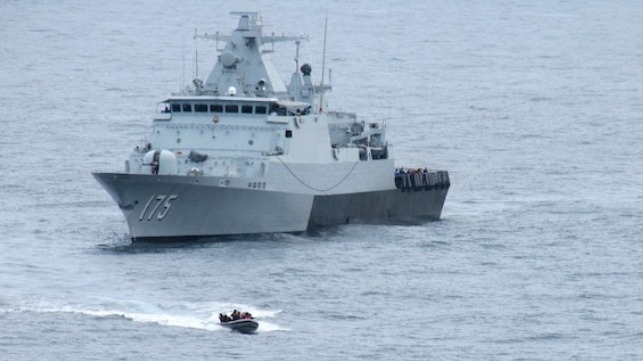U.S. and Allies Conduct Annual Southeast Asia Training Exercise

The U.S. Navy and maritime forces from 20 Indo-Pacific nations have kicked off the annual Southeast Asia Cooperation and Training (SEACAT) exercise amidst the ongoing maritime tensions across the region. The twentieth edition of SEACAT currently underway in Singapore is designed to enhance cooperation among Southeast Asian countries and provide mutual support and a common goal to address crises, contingencies and illegal activities in the maritime domain using standardized tactics, techniques and procedures.
It comes at a critical moment when maritime insecurity is on the rise with the United Nations Security Council identifying Asia, the Straits of Malacca and Singapore and the South China Sea as among global hotspots for insecurity, piracy, armed robberies and other illegal activities that pose significant threat to international trade.
The exercise that is largely a show of force brings together naval forces of the U.S. and key allies amidst rising tensions between the U.S. and China. The U.S. has accused China of aggressive behavior in the South China Sea with recent dangerous encounters between the two countries’ warships.
“In this region, the strength of our partnerships matter and our ability and willingness to work together is paramount” said Vice Adm. Karl Thomas, commander, U.S. 7th Fleet. "This year’s SEACAT aims to enhance our interoperability as we address our shared maritime security concerns and preserve rules-based international order."
SEACAT promotes shared commitments to maritime partnerships, security and stability in Southeast Asia. The exercise scenarios are designed to encourage countries to use maritime forces to enhance understanding of the operational environment, build capacity for humanitarian support missions and uphold international laws and norms.
A maritime operations center in the International Fusion Center in Singapore will serve as a centralized hub for crisis coordination and information sharing in the tracking of contracted merchant vessels simulating suspicious vessels of interests throughout Southeast Asian seas. Countries will work with all available maritime domain awareness tools to provide cueing and contact information to another country’s operations center and maritime patrol reconnaissance aircraft or surface assets with the stated goal of enforcing international rules, laws and norms.
“The scenarios are designed to encourage countries to work together though maritime domain awareness assets to better understand operations and adherence to international norms,” said Capt. Tom Ogden, commander, Destroyer Squadron (DESRON) 7. He added that practicing multilateral, multi-platform intercepts help Southeast Asian countries prepare for possible real-world engagements in the future.
SEACAT includes 10 ships and more than 400 personnel with U.S. Navy participation including USS Tulsa (LCS 16), staff of DESRON 7, P-8A Poseidon aircraft assigned to Task Force 72, and personnel from Task Forces 73, 76, U.S. 7th Fleet, and U.S. Pacific Fleet.
